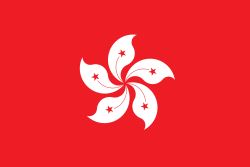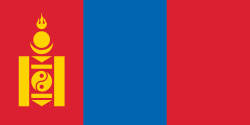Asijské zimní hry 1996
Asijské zimní hry 1996 byly třetí v pořadí a uskutečnily se od 4. do 1. února 1996 v Charbinu v provincii Chej-lung-ťiang na severovýchodě ČLR. Původně plánovala hostit hry Severní Korea v Samjiyeonu v roce 1995, ale nebyla schopna dodržet svůj závazek. Rozhodnutí Mezinárodní olympijský výbor'Mezinárodního olympijského výboru a změně termínu pořádání zimních olympijských her na rok 1994 ovlivnilo i termín Asijských zimních her, jelikož nebylo žádoucí, aby se obě akce konaly ve stejném roce. Těchto her se poprvé účastnily bývalé republiky Sovětského svazu, jejichž národní olympijské výbory byly přijaty do Asijského olympijského výboru.
Sporty
Sportovci soutěžili v 43 disciplínách osmi sportů a dvou disciplínách ukázkového sportu.
| Sport | Disciplíny |
|---|---|
| Akrobatické lyžování | 2 |
| Alpské lyžování | 4 |
| Běh na lyžích | 6 |
| Biatlon | 6 |
| Krasobruslení | 4 |
| Lední hokej | 2 |
| Rychlobruslení | 9 |
| Short track | 10 |
| Skoky na lyžích | 2[p 1] |
Země a medaile
Her se zúčastnilo 453 sportovců ze sedmnácti zemí.
| Země | Sportovci | Zlato | Stříbro | Bronz | Medaile |
|---|---|---|---|---|---|
| ? | 15 | 7 | 15 | 37 | |
| ? | 0 | 0 | 0 | 0 | |
| ? | 0 | 0 | 0 | 0 | |
| ? | 0 | 0 | 0 | 0 | |
| ? | 8 | 14 | 10 | 32 | |
| ? | 8 | 10 | 8 | 26 | |
| ? | 14 | 9 | 8 | 31 | |
| ? | 0 | 0 | 0 | 0 | |
| ? | 0 | 0 | 0 | 0 | |
| ? | 0 | 0 | 0 | 0 | |
| ? | 0 | 0 | 0 | 0 | |
| ? | 0 | 0 | 0 | 0 | |
| ? | 0 | 0 | 0 | 0 | |
| ? | 0 | 0 | 0 | 0 | |
| ? | 0 | 0 | 0 | 0 | |
| ? | 0 | 0 | 0 | 0 | |
| ? | 0 | 1 | 1 | 2 |
Odkazy
Poznámky
- ↑ Zařazeno jako ukázkový sport.
Reference
V tomto článku byl použit překlad textu z článku 1996 Asian Winter Games na anglické Wikipedii.
Média použitá na této stránce
Flag of Iran. The tricolor flag was introduced in 1906, but after the Islamic Revolution of 1979 the Arabic words 'Allahu akbar' ('God is great'), written in the Kufic script of the Qur'an and repeated 22 times, were added to the red and green strips where they border the white central strip and in the middle is the emblem of Iran (which is a stylized Persian alphabet of the Arabic word Allah ("God")).
The official ISIRI standard (translation at FotW) gives two slightly different methods of construction for the flag: a compass-and-straightedge construction used for File:Flag of Iran (official).svg, and a "simplified" construction sheet with rational numbers used for this file.
Chinese Taipei Olympic Flag. According to the official website of Chinese Taipei Olympic Committee, Blue Sky(circle) & White Sun(triangles) above the Olympic rings is neither the National Emblem of the Republic of China, nor the Party Emblem of Kuomintang (KMT), but a design in between, where the triangles do not extend to the edge of the blue circle, as registered at International Olympic Committee in 1981 and digitally rendered in 2013. Besides, the blue outline of the five-petaled plum blossom is broader than the red one. Moreover, the CMYK code of the blue one and the Blue Sky & White Sun is "C100-M100-Y0-K0", and different from the Olympic rings (C100-M25-Y0-K0). Note that it's the only version recognized by IOC.
The national flag of Kingdom of Thailand; there are total of 3 colours:
- Red represents the blood spilt to protect Thailand’s independence and often more simply described as representing the nation.
- White represents the religion of Buddhism, the predominant religion of the nation
- Blue represents the monarchy of the nation, which is recognised as the centre of Thai hearts.
















